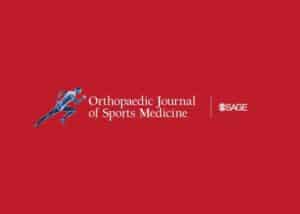
Authors:
Colin P Murphy, Salvatore J Frangiamore, Sandeep Mannava, Anthony Sanchez, Evan R Beiter, James M Whalen, Mark D Price, Robert F LaPrade, Matthew T Provencher
Abstract:
Background: Anterior glenohumeral instability is a common abnormality in the young, athletic population, especially in those participating in contact or collision sports.
Purpose: To examine the effect of anterior labral tears, their associated injuries, and their management on future National Football League (NFL) performance.
Study design: Cohort study; Level of evidence, 3.
Methods: A retrospective review of all NFL Combine participants from 2009 to 2015 was performed using medical and imaging reports compiled at the NFL Combine. These notes and images were reviewed and analyzed for involved structures, associated injuries, and evidence of previous surgical interventions. The respective NFL draft position, number of NFL games played, number of NFL games started, and NFL snap percentage for each player’s first 2 seasons were collected and compared with a control group and within subgroups.
Results: Of the 2285 players at the NFL Combine between 2009 and 2015, there were 206 (9%) anterior labral tears confirmed by magnetic resonance imaging, 20 of which were bilateral, for a total of 226 affected shoulders. There were 908 players who fit the criteria for inclusion in the control group. Overall, there were no significant differences between players with anterior labral tears and the control players in terms of draft position (P = .259), games played in their first 2 NFL seasons (P = .391), games started in their first 2 NFL seasons (P = .486), or snap percentage in their first (P = .268) and second (P = .757) NFL seasons. In general, sustaining a concomitant injury with an anterior labral tear (superior labrum from anterior to posterior [SLAP] tear, glenoid bone loss, Hill-Sachs lesion, rotator cuff tear, humeral avulsion of the glenohumeral ligament, and anterior tear combined with posterior tear) negatively affected a player’s NFL draft position when compared with those with an isolated anterior labral tear (P = .003). There was no significant difference between operative and nonoperative management for anterior labral tears in terms of any performance metric.
Conclusion: A history of anterior labral tears was not significantly associated with future NFL performance. While players with isolated injuries were drafted significantly earlier than those with concomitant injuries, combined injuries did not affect players’ games played, games started, or snap percentage in their first 2 NFL seasons. Glenoid bone loss did significantly decrease draft position; however, the severity of bone loss did not affect draft position, and there were no significant associations between glenoid bone loss and games played, games started, or snap percentage.
For the complete study: Effect of Anterior Glenoid Labral Tears and Glenoid Bone Loss at the NFL Combine on Future NFL Performance